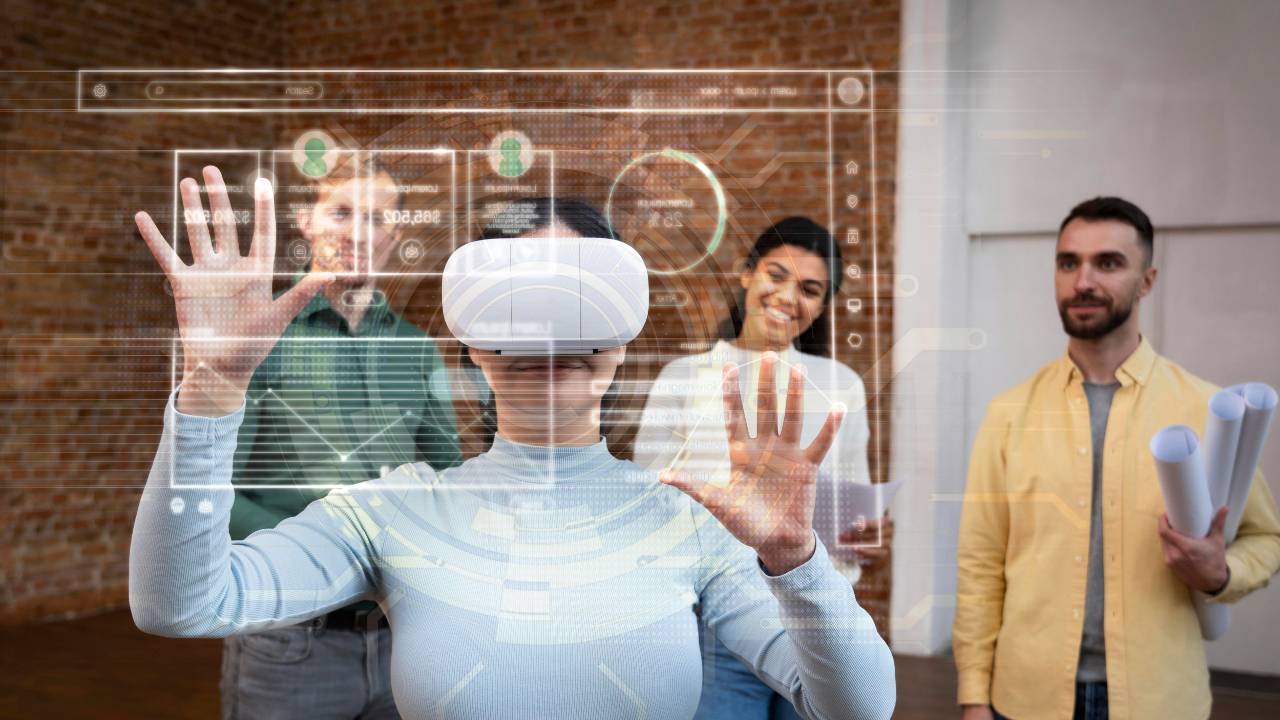info@saymeta.io
Field service operations are a critical aspect of many businesses, as they involve deploying employees to customer sites to deliver products or services. Therefore, it is essential to optimize this process to ensure customer satisfaction.
What has merged Reality Remote Assistance?
Merged reality remote assistance is a new technology that is helping businesses to optimize their field service operations. It involves using mixed-reality technology to enable remote collaboration between technicians and experts.
Merged reality remote assistance has numerous benefits, including improved efficiency, enhanced customer experience, and increased revenue.
Advantages of Merged Reality Remote Assistance
Here are some incredible advantages of merged reality remote assistance:
Improved Efficiency and Productivity
Merged reality remote assistance enables experts to collaborate with field service technicians in real time, reducing the need for technicians to travel to customer sites. This results in faster problem resolution and reduced downtime, improving efficiency and productivity.
Enhanced Customer Experience
Merged reality remote assistance allows for a more personalized and efficient customer experience. By quickly resolving customer issues, businesses can improve customer satisfaction and loyalty.
Reduced Costs and Increased Revenue
Merged reality remote assistance reduces the costs associated with field service operations by eliminating travel costs and reducing downtime. Additionally, by improving customer satisfaction and loyalty, businesses can increase revenue.
Improved Safety and Compliance
Merged reality remote assistance can help ensure the safety of field service technicians by allowing experts to guide them through hazardous situations remotely. It also enables businesses to maintain compliance with regulations and standards by providing real-time guidance and monitoring.
How Merged Reality Remote Assistance Works?
Merged reality remote assistance uses mixed reality technology to combine virtual objects with the real world, creating a shared collaborative environment between experts and technicians. The merged reality remote assistance equipment includes a headset or mobile device, a camera, and real-time collaboration software.
Merged reality remote assistance is integrated into field service operations using real-time software that connects experts with field service technicians. The software also allows for sharing technical documentation, images, and videos.
Merged reality remote assistance has been used in various industries, including manufacturing, healthcare, and telecommunications. For example, companies like Bosch and Philips Healthcare have implemented technology to improve their field service operations.
Companies implementing merged reality remote assistance have seen significant improvements in their field service operations. For example, Bosch has reported a 50% reduction in downtime and a 90% improvement in first-time fix rates.
Merged reality remote assistance has significantly impacted field service operations and customer experience by improving efficiency, reducing downtime, and enhancing customer satisfaction.
Critical Considerations for Implementing Merged Reality Remote Assistance
Here are some crucial factors one needs to take into account before implementing the merged reality remote assistance:
Identifying the right equipment and technology partners
To successfully implement merged reality remote assistance, businesses must identify the right equipment and technology partners to ensure that the technology meets their needs.
Training field service personnel and customers on how to use the technology
Training is critical to the successful implementation of merged reality remote assistance. Field service personnel and customers must be trained to use the technology effectively.
Ensuring data privacy and security
Data privacy and security are critical considerations when implementing merged reality. In addition to improving efficiency and productivity, merged reality remote assistance can lead to cost savings and increased revenue for companies.
Companies can save money on field service operations by reducing the need for on-site visits and travel expenses. Furthermore, by improving customer experience, companies can increase customer loyalty and retention, leading to increased revenue.
One company that has successfully implemented merged reality remote assistance is Philips Healthcare. The company uses the technology to diagnose and repair medical equipment remotely, reducing the need for on-site visits and minimizing equipment downtime. As a result, Philips Healthcare has improved the efficiency of its field service operations and enhanced the overall customer experience.
Future of Merged Reality Remote Assistance
Looking to the future, the potential of merged reality remote assistance is vast. As technology evolves and improves, it is expected to become even more widely adopted across various industries. It presents both opportunities and challenges, as companies must keep up with the latest developments and adapt to changes in the market.
However, the potential benefits of the technology make it a valuable investment for any company looking to improve its field service operations and customer experience.
Conclusion
Merged reality remote assistance has the potential to revolutionize field service operations and customer experience. By improving efficiency and productivity, enhancing customer experience, reducing costs, and improving safety and compliance, this technology offers numerous benefits for companies across various industries.
As technology continues to evolve and improve, companies must explore and adopt merged remote reality assistance as a valuable tool for success.


[…] their expertise in virtual reality, augmented reality, and other immersive technologies, SayMeta has helped companies and […]